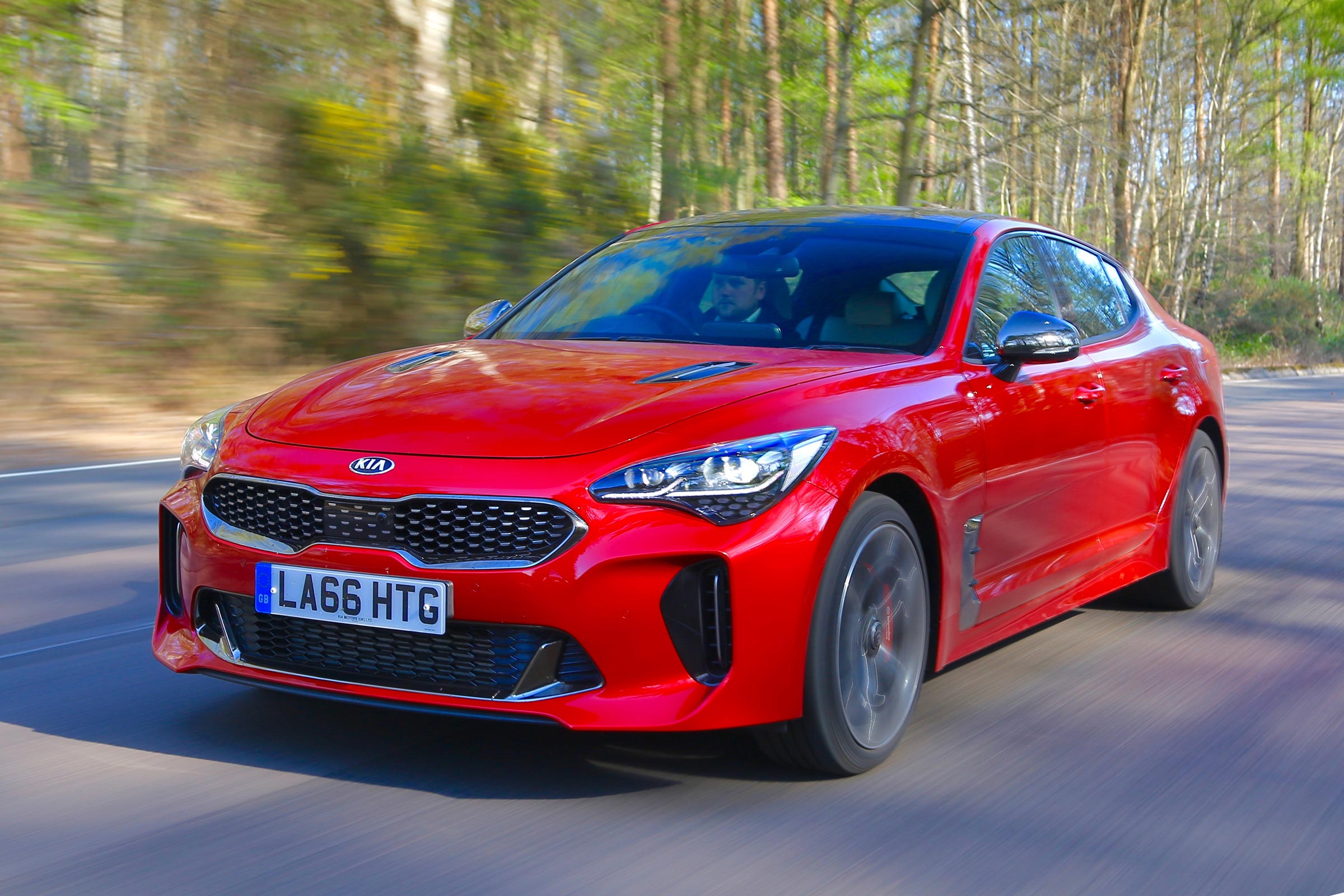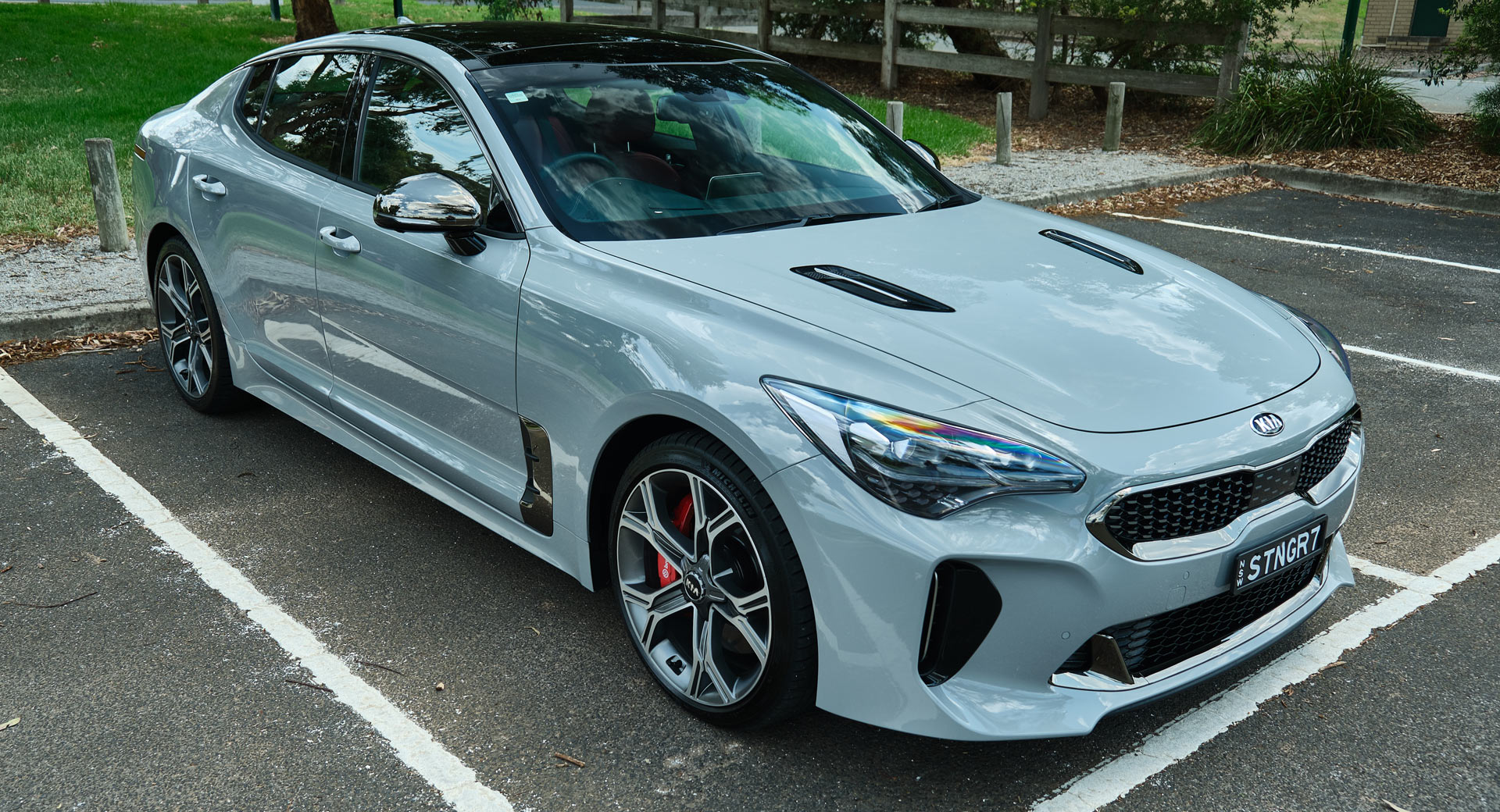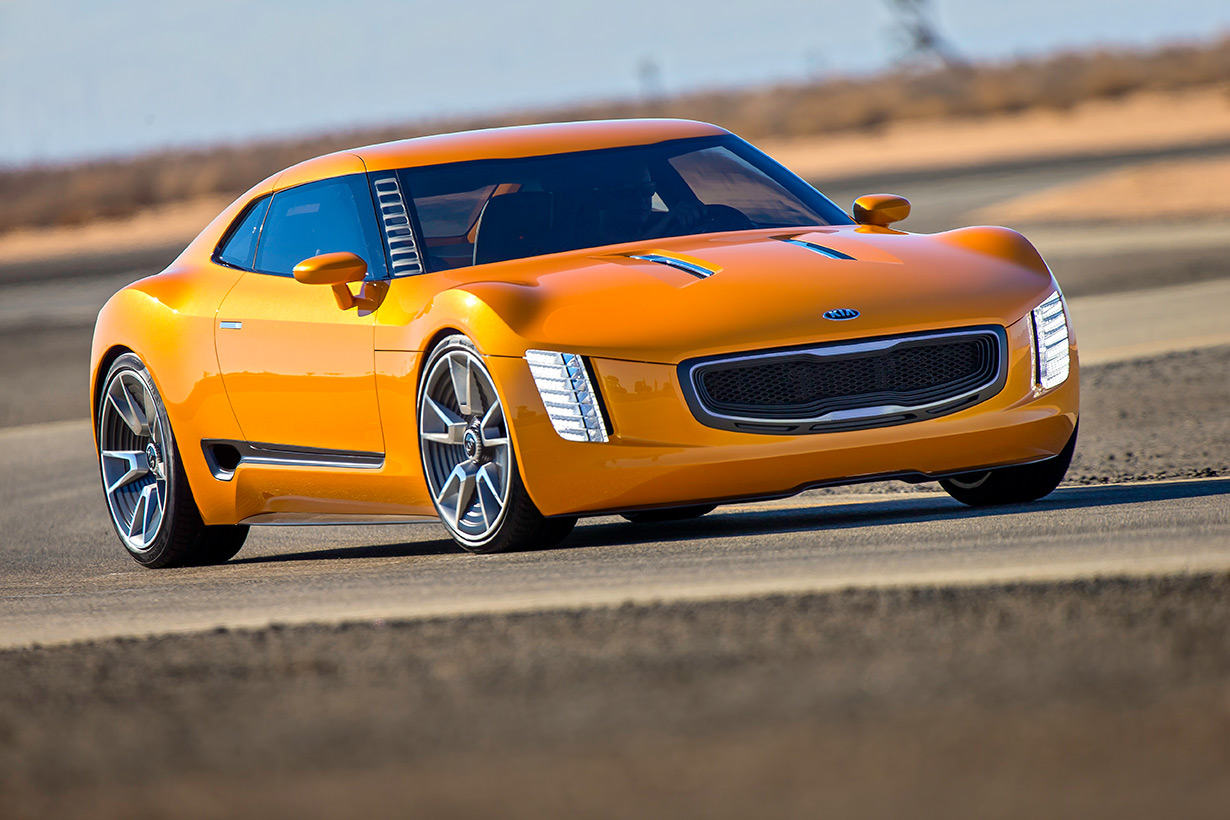What Brand Car Is A Stinger: Unveiling Kia’s Performance Flagship cars.truckstrend.com
In the vast and often predictable landscape of the automotive industry, few vehicles have managed to surprise and impress as profoundly as the Kia Stinger. When it first debuted, it sent ripples through the market, challenging preconceived notions about its brand and demonstrating a bold new direction. For many, the very idea of a high-performance, rear-wheel-drive sport sedan coming from Kia was almost unbelievable. Yet, the Stinger arrived, delivered, and etched its name into the annals of automotive history as a genuine game-changer.
This comprehensive article aims to pull back the curtain on this remarkable machine, answering the fundamental question: What brand car is a Stinger? Beyond simply identifying its manufacturer, we will delve into the Stinger’s genesis, its design philosophy, its engineering prowess, and its enduring legacy. Whether you’re a curious enthusiast, a potential buyer of a pre-owned model, or simply interested in understanding how a mainstream brand redefined its image, this guide will provide a detailed exploration of the Kia Stinger.
What Brand Car Is A Stinger: Unveiling Kia’s Performance Flagship
The Identity Revealed: What Brand Car Is A Stinger?
Let’s get straight to the point: The Stinger is a product of Kia Motors, a South Korean multinational automobile manufacturer headquartered in Seoul. For decades, Kia, alongside its sibling Hyundai, was largely known for producing practical, affordable, and reliable vehicles. Their focus was on value, fuel efficiency, and a robust warranty, appealing to budget-conscious consumers and families.
However, around the turn of the millennium and into the 2010s, Kia embarked on an ambitious transformation. Under the guidance of design guru Peter Schreyer (formerly of Audi and Volkswagen) and performance maestro Albert Biermann (formerly head of BMW M performance division), Kia began to inject passion, style, and genuine driving dynamics into its lineup. The Stinger was the culmination of this radical shift, a clear declaration that Kia was no longer content merely to compete on price; it was ready to challenge the established premium and performance brands on their own turf.
The Stinger represented Kia’s audacious leap into the sport sedan segment, a territory traditionally dominated by European powerhouses like BMW, Audi, and Mercedes-Benz. Its very existence shattered stereotypes and forced a re-evaluation of the Kia brand, proving that innovation and excitement could indeed come from unexpected places.
Genesis of a Game-Changer: The Stinger’s Development Story
The journey of the Kia Stinger began not as a mere concept car, but as a serious commitment by Kia to build a true gran turismo. The initial spark was the Kia GT Concept, unveiled at the 2011 Frankfurt Motor Show. Its positive reception fueled the company’s ambition to turn the concept into a production reality.

Key to the Stinger’s development was the strategic hiring of Albert Biermann in 2015. His extensive experience in developing high-performance vehicles for BMW’s M division was instrumental. Biermann and his team subjected the Stinger to rigorous testing, most notably at the demanding Nürburgring Nordschleife racetrack in Germany. This commitment to performance tuning on one of the world’s most challenging circuits underscored Kia’s intent: the Stinger wasn’t just about looking fast; it was engineered to be fast and handle exceptionally well.
The Stinger’s mission was clear: to offer a compelling blend of performance, luxury, and practicality, all wrapped in a striking design, but at a price point that significantly undercut its premium competitors. It aimed to be a credible alternative for buyers who desired dynamic driving but were perhaps deterred by the higher price tags or maintenance costs associated with traditional luxury sport sedans.
Design and Aesthetics: The Visual Prowess of the Stinger
One of the Stinger’s most immediate and undeniable appeals is its stunning design. Penned under the direction of Peter Schreyer, the Stinger embodies a "gran turismo" aesthetic, a term traditionally used for cars that combine performance with comfortable long-distance touring capabilities.

Exterior: The Stinger boasts a sleek, low-slung fastback silhouette that gives it an aggressive yet elegant presence. Key design elements include:
- Kia’s Signature "Tiger-Nose" Grille: Reimagined with a wider, more assertive stance.
- Long Hood and Short Front Overhang: Indicating its rear-wheel-drive architecture and emphasizing its performance orientation.
- Muscular Haunches and Wide Stance: Giving it a planted, ready-to-pounce look.
- Integrated Air Curtains and Vents: Not just for show, these are functional for aerodynamics and cooling.
- LED Lighting: Sharp, distinctive headlights and taillights that give it a unique signature, especially at night.
- Hatchback Design: Despite its sedan-like appearance, the Stinger features a practical liftback tailgate, offering surprising cargo versatility.

Interior: The Stinger’s cabin continues the theme of sporty luxury. It’s driver-focused, with high-quality materials and a thoughtful layout.
- Premium Materials: Soft-touch surfaces, available Nappa leather, and real aluminum accents elevate the interior far beyond typical Kia standards of its time.
- Driver-Centric Cockpit: The dashboard is angled towards the driver, and the primary controls are intuitively placed.
- Supportive Seating: Sport seats offer excellent bolstering for spirited driving, while remaining comfortable for long journeys.
- Practicality: The hatchback design means a surprisingly spacious trunk, easily accessible for larger items.
The Stinger’s design successfully blended the sportiness of a coupe with the practicality of a sedan, creating a visually compelling package that stands out from the crowd.
Performance and Engineering: Under the Stinger’s Hood
The heart of any true sport sedan lies in its powertrain and chassis dynamics. The Kia Stinger did not disappoint, offering compelling performance options engineered for driving enthusiasts.
Engine Options:
- 2.0L Turbocharged Four-Cylinder (Theta II): This entry-level engine, typically found in the GT-Line trim, produced around 255 horsepower and 260 lb-ft of torque. While not as potent as the V6, it offered a lively driving experience, good fuel economy, and was more than adequate for daily driving and occasional spirited runs.
- 3.3L Twin-Turbocharged V6 (Lambda II): This was the star of the show, powering the GT, GT1, and GT2 trims. Generating an impressive 368 horsepower and 376 lb-ft of torque (figures varied slightly by model year, with earlier models having 365hp), this engine propelled the Stinger from 0-60 mph in a blistering 4.7 seconds, placing it firmly in contention with much more expensive performance cars. Its robust torque delivery provided exhilarating acceleration across the RPM range.
Transmission: Both engines were paired with a smooth and responsive 8-speed automatic transmission. This transmission, developed in-house by Hyundai-Kia, offered quick shifts and featured paddle shifters for manual control, enhancing the sporty driving experience.
Drivetrain: The Stinger was available with two drivetrain configurations:
- Rear-Wheel Drive (RWD): Standard on all trims, emphasizing the Stinger’s sporting intentions and offering a pure driving feel.
- All-Wheel Drive (AWD): Optional on all trims, providing enhanced traction and stability, especially in inclement weather conditions, and contributing to quicker launches. The AWD system featured a dynamic torque vectoring control system for improved handling.
Chassis and Suspension:
- Rigid Platform: The Stinger’s chassis was engineered for stiffness, providing a solid foundation for dynamic handling.
- Independent Suspension: MacPherson struts up front and a multi-link setup at the rear, tuned by Albert Biermann’s team for a balance of comfort and agility.
- Adaptive Damping Suspension (ECS): Available on higher trims, this system allowed drivers to adjust suspension stiffness, enhancing ride comfort or sharpening handling characteristics based on selected drive modes.
- Brembo Brakes: High-performance Brembo brake calipers (four-piston front, two-piston rear) were standard on V6 GT models, providing exceptional stopping power and fade resistance, crucial for a car of the Stinger’s capabilities.
Technology and Features: More Than Just Speed
Beyond its raw performance, the Kia Stinger was also equipped with a generous array of technology and comfort features, further enhancing its value proposition.
- Infotainment System: Featuring a prominent touchscreen display (initially 7 or 8 inches, later 10.25 inches), the system offered Apple CarPlay and Android Auto integration, navigation, and a user-friendly interface.
- Premium Audio: Higher trims often included a Harman Kardon premium audio system, delivering rich, immersive sound.
- Driver-Assistance Systems (ADAS): Kia equipped the Stinger with a comprehensive suite of safety and convenience features, including:
- Forward Collision-Avoidance Assist (FCA)
- Lane Keeping Assist (LKA)
- Blind-Spot Collision Warning (BCW)
- Rear Cross-Traffic Collision Warning (RCCW)
- Smart Cruise Control with Stop & Go (SCC)
- Surround View Monitor (SVM)
- Comfort and Convenience: Available features included heated and ventilated front seats, heated rear seats, a heated steering wheel, a head-up display, wireless phone charging, and a power liftgate.
This blend of performance, technology, and comfort positioned the Stinger as a compelling package for discerning buyers.
The Stinger’s Market Position and Competition
The Kia Stinger carved out a unique niche in the automotive market. It wasn’t a direct competitor to traditional family sedans, nor was it a full-blown luxury car in the vein of a Mercedes-Benz C-Class or BMW 3 Series. Instead, it aimed for the sportback/gran turismo segment, often cross-shopping with vehicles like the BMW 4 Series Gran Coupe, Audi A5 Sportback, and even its corporate cousin, the Genesis G70 (which shares much of its platform and powertrains).
What set the Stinger apart was its value proposition. It offered performance and features comparable to vehicles costing significantly more, making it an attractive option for buyers who prioritized driving dynamics and style over a premium badge. Its distinctive fastback design also helped it stand out in a crowded market dominated by more conventional sedans and SUVs. While its resale value initially lagged behind luxury competitors, its strong performance and unique character built a loyal following.
Ownership Experience and Considerations
Owning a Kia Stinger generally means enjoying a thrilling driving experience paired with surprising practicality.
Pros:
- Exhilarating Performance: Especially with the V6 engine, the Stinger delivers impressive acceleration and engaging handling.
- Striking Design: It turns heads and stands out from the crowd.
- Feature-Rich: Loaded with technology, safety features, and comfort amenities.
- Practicality: The hatchback design offers more versatile cargo space than a traditional sedan.
- Strong Warranty: Kia’s industry-leading warranty (10-year/100,000-mile powertrain warranty) provides peace of mind.
- Value for Money: Offers performance and features at a lower price point than many competitors.
Cons:
- Fuel Economy: The V6 engine, while powerful, can be thirsty, especially with spirited driving.
- Brand Perception: While improving, some buyers still associate Kia with budget cars, which might affect perceived prestige or resale value compared to luxury brands.
- Rear Seat Headroom: The sloping roofline can slightly compromise headroom for taller rear passengers.
- Discontinuation: As of 2024, the Stinger has been discontinued, meaning new models are no longer available. This could impact parts availability in the very long term, though Kia’s robust supply chain should alleviate immediate concerns.
For those considering a pre-owned Stinger, it represents an excellent opportunity to acquire a high-performance, stylish, and well-equipped vehicle at a potentially significant discount compared to its original MSRP.
Concluding Summary
The Kia Stinger is unequivocally a product of Kia Motors, but it is so much more than just a car from a mainstream brand. It is a testament to ambition, engineering prowess, and a willingness to challenge the status quo. From its initial concept to its final production model, the Stinger embodied Kia’s transformative journey from a value-oriented manufacturer to a serious contender in the performance segment.
With its head-turning design, potent engine options, engaging driving dynamics, and a wealth of technology, the Stinger successfully offered a compelling alternative to established premium sport sedans. It wasn’t just a car; it was a statement – a bold declaration that Kia could build a vehicle that stirred the soul as much as it satisfied the wallet. Although new production has ceased, the Kia Stinger leaves behind a significant legacy as a true "halo car" that elevated its brand and left an indelible mark on the automotive landscape.
Kia Stinger Approximate Historical MSRP Range (During Production)
Please note: These are approximate MSRP ranges for new models during their production run and will vary based on model year, specific options, and regional pricing. Prices for pre-owned models will vary significantly based on condition, mileage, and market demand.
| Trim Level | Engine | Drivetrain (Standard/Optional) | Approximate MSRP Range (USD) | Key Features (General) |
|---|---|---|---|---|
| GT-Line | 2.0L Turbo I4 (255 HP) | RWD / AWD | $34,000 – $39,000 | Entry-level sport, LED lighting, leather seats, infotainment. |
| GT | 3.3L Twin-Turbo V6 (365-368 HP) | RWD / AWD | $39,000 – $45,000 | V6 power, Brembo brakes, sport-tuned suspension. |
| GT1 | 3.3L Twin-Turbo V6 (365-368 HP) | RWD / AWD | $45,000 – $51,000 | GT features plus adaptive suspension, premium audio, advanced ADAS. |
| GT2 | 3.3L Twin-Turbo V6 (365-368 HP) | RWD / AWD | $51,000 – $54,000+ | All GT1 features plus Nappa leather, head-up display, ventilated seats, more ADAS. |
Frequently Asked Questions (FAQ) About the Kia Stinger
Q1: What brand car is a Stinger?
A1: The Stinger is a high-performance sport sedan manufactured by Kia Motors, a South Korean automobile company.
Q2: Is the Kia Stinger discontinued?
A2: Yes, production of the Kia Stinger officially ended in late 2023. The final models were sold as 2023 model year vehicles.
Q3: Why was the Kia Stinger discontinued?
A3: Several factors contributed to its discontinuation, including declining sedan sales globally in favor of SUVs, Kia’s strategic shift towards electrification (with models like the EV6 GT serving as a spiritual successor), and the Stinger’s relatively niche market position.
Q4: Is the Kia Stinger a luxury car?
A4: While not marketed as a traditional luxury brand like BMW or Audi, the Stinger offered many luxury-level features, premium materials, and performance that often matched or exceeded its luxury counterparts. It occupied a "premium mainstream" or "affordable luxury" segment.
Q5: Is the Kia Stinger fast?
A5: Absolutely. The Stinger GT models, equipped with the 3.3L twin-turbo V6 engine, can accelerate from 0-60 mph in under 5 seconds (around 4.7 seconds), making it a genuinely fast vehicle.
Q6: Is the Kia Stinger reliable?
A6: Generally, yes. Kia has a strong reputation for reliability, and the Stinger benefited from Kia’s robust engineering and long warranty. Owners typically report good reliability, especially with regular maintenance.
Q7: What car replaced the Kia Stinger?
A7: There isn’t a direct gasoline-powered replacement for the Stinger. However, Kia’s electric performance vehicle, the EV6 GT, is considered its spiritual successor, offering similar levels of performance and a sporty driving experience in an all-electric package.
Q8: Why is the Stinger considered such good value?
A8: The Stinger offered performance, features, and design aesthetics comparable to luxury sport sedans that cost tens of thousands more. Its aggressive pricing relative to its capabilities made it an exceptional value proposition for enthusiasts.
Q9: Does the Stinger have good handling?
A9: Yes, thanks to its rear-wheel-drive platform, sport-tuned suspension (especially with adaptive damping), and input from performance engineers like Albert Biermann, the Stinger offers engaging and capable handling, making it a joy to drive on winding roads.

